Search results for: 'Mitte'
-
 Lorestanischer Keramikkrug
Lorestanischer KeramikkrugGroße Keramik aus Lorestan. Einhenkliger Krug von eleganter Form. Über 20cm hoch. 1500 bis 500 v. Chr., Späte Bronzezeit bis Eisenzeit.
Price: on request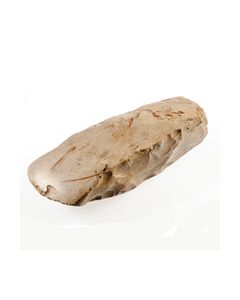 Neolithischer Dicknackenbeilkopf
Neolithischer DicknackenbeilkopfSchwerer Beilkopf vom Dicknacken-Typ. Typische neolithische Bearbeitung von hoher Präzision mit polierten Oberflächen. 3200 bis 1950 v. Chr. 124mm lang.
Price: on request Korinthischer Aryballos
Korinthischer AryballosSphärischer Körper, breite Lippe mit hohem Rand. Der Körper verziert mit großem Vierblatt-Motiv. 580 - 550 v. Chr.
Price: on request Vulkanit-Beil aus Norddeutschland
Vulkanit-Beil aus NorddeutschlandNeolithischer Beilkopf aus dunkel gemasertem Vulkangestein. Ca. 3900 v. Chr. bis 3400 v. Chr., Dolmen-Periode. Fund bei Hannover.
Price: on request Akkadian cylinder seal of shell core
Akkadian cylinder seal of shell coreTwo lions are fighting with two buffalos. The balance and detail of the scene is an impressive demonstration of the Akkadian seal engraver's skill. Old Akkadian, around 2300 BC.
Price: on request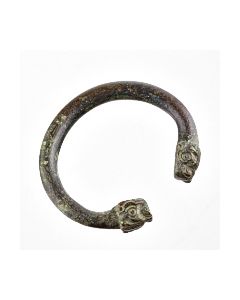 Bracelet from Luristan with lion terminals
Bracelet from Luristan with lion terminalsBronze braclet in perfect condition with beautiful dark patina. The terminals are stylized lion heads.
Price: on request Decorative pin from Luristan
Decorative pin from LuristanThe pin head is shaped like an open basket with a decorative knob. Bronze with attractive patina.
Price: on request Luristan silver bracelet with interesting decoration
Luristan silver bracelet with interesting decorationThe bracelet is massive yet elegant. Crossed lines and open circles are engraved on its surface. It is a beautiful piece from the Iron Age of Luristan.
Price: on request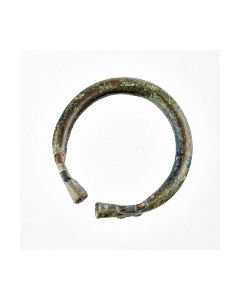 Bracelet from Luristan with animal terminals
Bracelet from Luristan with animal terminalsA high degree of abstraction for the animal heads and a wonderful blue patina make this piece a highlight for Iranian bronze works.
Price: on request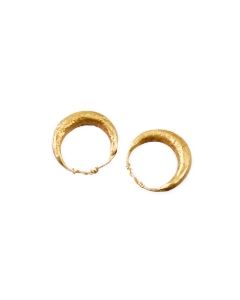 Graeco-Roman earrings
Graeco-Roman earringsThe pair of earrings is made of gold sheet. It is hollow inside. The type is from Northern Africa and dates to Greek or Roman times.
Price: on request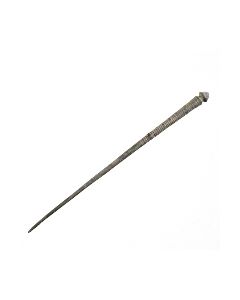 Bronze pin from Luristan
Bronze pin from LuristanLovely bronze pin from the early Iron Age. The head is decorated by engraved lines and a geometric knob.
Price: on request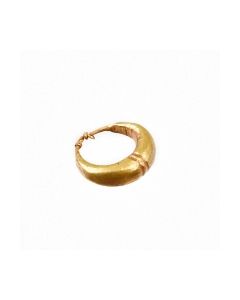 Graeco-Roman earring
Graeco-Roman earringThe decorated earrings is made of gold sheet. It is hollow inside. The type is from Northern Africa and dates to Greek or Roman times.
Price: on request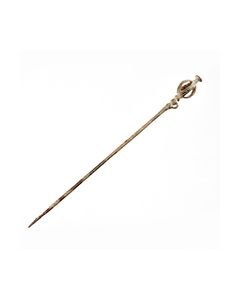 Large decorative pin from Luristan
Large decorative pin from LuristanThe pin head is shaped like an open basket with a decorative knob. Bronze with attractive patina.
Price: on request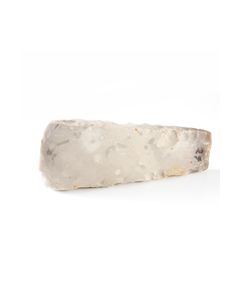 Dicknackiger Beilkopf
Dicknackiger BeilkopfNeolithisches Beil aus hellem, marmorfarbenem Flint. Dicknackiger, dünnblättriger Typ. 3200 v. Chr. bis 1950 v. Chr.
Price: on request Nordafrikanisches Beil aus Felsgestein
Nordafrikanisches Beil aus FelsgesteinPräzise gearbeitete polierte Flächen. Sehr schöner grau-grüner Stein. Neolithikum, ca. 6000 v. Chr. bis 2500 v. Chr.
Price: on request Clay figurine of an Orans from the Fayum
Clay figurine of an Orans from the FayumAus dem Fayum. Kopf einer Frau mit rundem Gesicht, breiter Knollennase und wulstigem Hals. In den Ohren Löcher für Aufnahme von Ohrringen. Exzellent erhalten.
Price: on request Lorestanische Keramikamphore
Lorestanische KeramikamphoreGroße Keramik aus Lorestan. Amphore mit Ritzdekor. 18,5cm hoch. 2000 bis 500 v. Chr., Mittlere Bronzezeit bis Eisenzeit.
Price: on request Korinthischer Aryballos
Korinthischer AryballosSphärischer Körper, breite Lippe mit hohem Rand. Der Körper verziert mit großem Vierblatt-Motiv. 2. - 3. Viertel 6. Jh. v. Chr.
Price: on request Korinthischer Aryballos
Korinthischer AryballosSphärischer Körper, breite Lippe mit hohem Rand. Der Körper verziert mit großem Vierblatt-Motiv. 2. - 3. Viertel 6. Jh. v. Chr.
Price: on request Korinthischer Aryballos
Korinthischer AryballosSphärischer Körper, breite Lippe mit hohem Rand. Aus der Gruppe der quatrefoil-Aryballoi, mit Abwandlung im Dekor. Spätkorinthisch.
Price: on request Graeco-Roman earrings
Graeco-Roman earringsThe decorated pair of earrings is made of gold sheet. It is hollow inside. The type is from Northern Africa and dates to Greek or Roman times.
Price: on request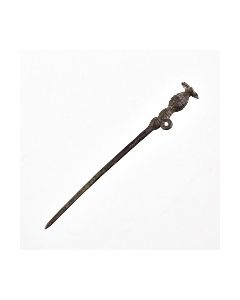 Luristan pin with floral decoration
Luristan pin with floral decorationWell preserved piece that impressively demonstrates the high quality of Luristan metal works.
Price: on request Roman bronze strainer from "Museum fuer Morgenlandfahrer"
Roman bronze strainer from "Museum fuer Morgenlandfahrer"Large piece in very good condition with nice patina. On display in "Ex Oriente Lux" exhibition, published in the corresponding catalogue.
Price: on request Faience figurine of Isis and Horus child
Faience figurine of Isis and Horus childGoddess on a throne nursing her child Horus. Dating to the Late Period of ancient Egypt.
Price: on request Faience tile of the Djoser pyramid type
Faience tile of the Djoser pyramid typeEgyptian wall tile from the Old Kingdom, 2nd to 3rd dynasty. The tile type is known from the famous step pyramid of king Djoser.
Price: on request Ägyptischer Skarabäus aus blauer Fayence
Ägyptischer Skarabäus aus blauer FayenceCa 1000 v.Chr., 21. Dynastie, Dritte Zwischenzeit. Der Stempel zeigt ein Muster aus 10 Kreisen, Ober- und Unterseite vollständig und museal erhalten.
Price: on request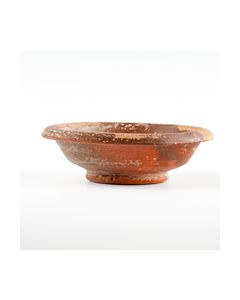 Schälchen aus Ordona (Herdonia), Süditalien
Schälchen aus Ordona (Herdonia), SüditalienAus der Sammlung von Captain Byron Farwell. Kunstvoll geformtes Schälchen mit rot-braunem Überzug. 5. - 4. Jh. v. Chr. Publiziert.
Price: on request Schälchen aus Ordona (Herdonia), Süditalien
Schälchen aus Ordona (Herdonia), SüditalienAus der Sammlung von Captain Byron Farwell. Kunstvoll geformtes Schälchen mit rot-braunem Überzug. 5. - 4. Jh. v. Chr. Publiziert.
Price: on request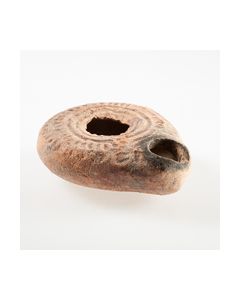 Spätrömische Öllampe aus dem Süden Israels
Spätrömische Öllampe aus dem Süden IsraelsHalbvoluten führen vom Brennloch zur Schulter, diese mit radialem Dekor.
Price: on request Massive bracelet from Luristan
Massive bracelet from LuristanThe bracelet has an interesting decoration on the outer side. It is a heavy and impressive bronze object.
Price: on request Pair of earrings from Luristan
Pair of earrings from LuristanThe earrings date to the early Iron Age of Luristan. The type of jewellery is rare for this region.
Price: on request Bronze Age axe head
Bronze Age axe headVery well preserved axe head. Late Bronze Age, 10th to 9th cent. BC.
Price: on request Bronze Age axe head
Bronze Age axe headVery well preserved axe head. Late Bronze Age, 10th to 9th cent. BC.
Price: on request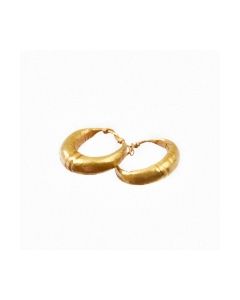 Graeco-Roman earrings
Graeco-Roman earringsThe decorated pair of earrings is made of gold sheet. It is hollow inside. The type is from Northern Africa and dates to Greek or Roman times.
Price: on request Campanian bail amphora with parallel pieces in Capua museum
Campanian bail amphora with parallel pieces in Capua museumTwo stilistically identical pieces from the same hand or workshop are on display in Capua in the Museo Campano. Perfectly preserved piece, very rare in such condition.
Price: on request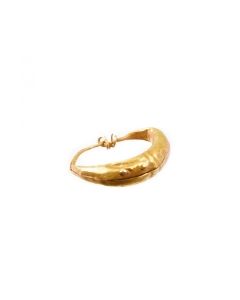 Graeco-Roman earring
Graeco-Roman earringThe decorated earrings is made of gold sheet. It is hollow inside. The type is from Northern Africa and dates to Greek or Roman times.
Price: on request

